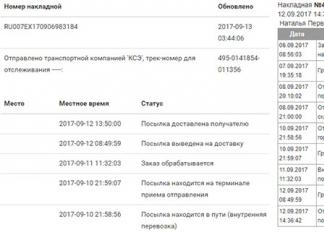Don’t know what to do if your computer reboots spontaneously? I will help you find the cause and try to give recommendations on how to eliminate them.
Cases where the computer restarts by itself are quite common and can be caused by a number of reasons. The main thing is to identify the problem in time and solve it, otherwise the computer may fail altogether.
Conventionally, two groups of reasons can be distinguished:
- Malfunctions in hardware (in the system unit)
- Software related issues
The computer reboots spontaneously, we are looking for the reason
Hardware
Most often, the computer reboots spontaneously due to problems with its hardware.
The most common reasons are:
- CPU overheating. Most often this is due to dust that accumulates on radiators, so the system unit must be cleaned regularly, at least once a year. A low-quality cooler or improper installation can also cause the processor to overheat.

- Poor performance of the fans in the processor, as a result of which it is not cooled sufficiently.
- Power supply failure. Burning of the braid in the power supply of the system unit can lead to uneven voltage distribution on the motherboard. Poor contact in the power cable of the system unit, especially if the cable was often removed and inserted back into the socket, can also cause spontaneous reboots. Do not forget to check the condition of the capacitors; they should not be swollen or, on the contrary, dry. Often the power supply cannot cope with the load due to its low power. In this case, replace it with a more powerful one.
- Problems with RAM. If you suspect the RAM, you need to test its operation. There are many special programs and utilities for this, for example the Memtest utility. In addition, you can try replacing the module; perhaps the reason is its malfunction.
- Defects in the motherboard. Sudden reboots can be caused by microcracks on it or swollen capacitors.
Software
If everything is in order with the computer hardware, then the culprit for spontaneous reboots is a software problem. In order to localize the problem and fix it in a timely manner, it is necessary to determine when the PC malfunctions began and what this may be related to.
The main reasons in this block:
- Installing new programs and drivers. Sometimes updated software is not suitable for your operating system, or was not installed correctly. In this case, you need to reinstall the program in accordance with the instructions provided. Sometimes you just need to remove an inappropriate program. For example, if you have Windows 7 and are faced with the problem of a sudden reboot, it may be enough to uninstall the Nero program and everything will fall into place.
- Installing additional equipment that is not compatible with your computer. For example, you already have three hard drives and you add another video card, but the load on the power supply increases, and its power cannot cope with it. In this case, you can install a more powerful power supply or remove extra hard drives.
- Outdated software. This is evidenced by the slow operation of the computer, freezing, especially after logging on to the Internet, which provokes an automatic reboot. To avoid this, you need to periodically reinstall Windows (once a year if the computer is under average load, twice if it is heavily loaded).
- Problems with the hard drive or file system. Here the Victoria and Mhdd utility will come to your aid, which will test the hard drive for errors.
- Viruses are also a common cause of a computer suddenly rebooting.
To prevent your computer from spontaneously rebooting, it would be a good idea to disable automatic system reboot in the settings. This is quite easy to do. Right-click on the “My Computer” shortcut and select “Properties” there, in “Advanced system settings” select “Startup and Recovery” and uncheck the box next to “Restart automatically”, click “OK”.

From all of the above, it is clear that the problem of spontaneous computer reboot is quite complex and requires careful diagnosis. Therefore, it is worth regularly preventing such problems:
- update system equipment in a timely manner;
- periodically clean the contents of the system unit from dust;
- install new programs, strictly following the instructions;
- add new equipment to the computer that is compatible with the existing one and will not cause additional loads on the power supply.
If you cannot independently determine the reason for the computer rebooting spontaneously, or you are afraid of causing harm, it is better to seek the help of a specialist.
In contact with
None of the currently existing operating systems is immune from the occurrence of failures and errors. And Windows tenth version, despite its relevance, is no exception. And one of its problems is that sometimes Windows 10 reboots instead of shutting down. How to fix this problem using various methods, see below.
Instead of shutting down (Windows 10): what's the reason?
Even specialists who know the “ten”, so to speak, inside and out, often shrug their shoulders. The fact is that the true reason for the spontaneous reboot is still unknown.
However, most experts are inclined to believe that this system behavior is associated with NVIDIA video cards (more precisely, with their drivers) and malfunctions of system components in unofficial versions of Windows.

As for drivers, the problem that Windows 10 reboots when turned off can be solved by updating them normally (either in Device Manager or using specialized programs like Driver Booster).
You can also try to remove all devices associated with NVIDIA graphics adapters (monitors, card drivers) and use the “Found New Hardware Wizard” to reintegrate these components into the system. Everything is simple here.
When you turn off your computer, it restarts. Windows 10: Enabling Clean Boot
More complex situations occur when a spontaneous reboot is associated with the incorrect operation of some services and components. If Windows 10 constantly reboots when shut down, first you should pay attention to loading services.

To fix the problem, use the Run console (Win + R), where we enter the msconfig command. Here we select the “Download” tab. In the fields below, you need to deactivate all elements, leaving only the minimum load line active and checking the box next to safe mode. We save the changes and reboot the system.
Disabling startup and service components
If the problem that Windows 10 reboots when turned off remains, then repeat the previous step and look at the “Startup” tab.

If it has any active services, uncheck all processes. But that's not all.

After that, to be completely sure, go to the “Services” tab and deactivate all lines in the same way (you can use the “Disable all” button located at the bottom of the window). We reboot the computer again and look at the result.
Setting up the power supply
If Windows 10 reboots again and again when shutting down, try changing the installed power plan. To do this, you should use the appropriate section in the “Control Panel” (on laptops you can enter it through the context menu, called by right-clicking on the battery icon in the system tray).

Let's move on to the section for setting up buttons and entering a password, where we first deactivate the requirement to enter it when exiting sleep mode, and then uncheck the line for the recommended inclusion of quick startup. Save the changes and try to turn off the computer.
You can use the system registry editor (regedit in the “Run” menu), where we go down the HKLU branch through the SOFTWARE and Microsoft folders and reach the Explorer section. On the right side we find the CleanShutdown key, double-click to call up the options menu and change the key value to one (the default is zero).
Next, open the HKLM branch and go down the tree to the WinLogon directory. On the right we find the PowerAfterShutdown key and, in the same way as in the previous case, change the key value to one. This will allow you to completely turn off the power when you turn off the computer (even if the cord is inserted into the system unit or into the laptop connector).
Fixing dynamic processor clock incompatibility issue
If all of the above methods do not help, even if they are used simultaneously, the problem may be that Windows is incompatible with the so-called dynamic processor cycles, the processing of which is enabled by default.

To deactivate processing, use the command line (cmd in the “Run” console), where the following is written: bcdedit /set disabledynamictick yes.
After this, we first reboot the system, and then try to turn off the computer using the standard method through the Start menu. If for some reason this service needs to be re-enabled, use the same command, but with the “no” parameter.
Problems with BIOS firmware
Finally, the problem of spontaneous rebooting may be due to outdated firmware of the primary BIOS input/output system. You can try to fix the problem by installing a new version, pre-downloaded from the official developer resource, or at least resetting the settings to default values. However, this situation is extremely rare; in most cases, the methods described above help.
If your computer begins to reboot immediately after turning on or a few minutes after starting work, then there may be several reasons why the computer reboots itself. It happens that the computer at the same time begins to freeze, takes a long time to load, and the like. There may be several main reasons for this problem; usually, you can solve them yourself, without resorting to the help of specialists from the service center. What to do if the computer reboots spontaneously?
The computer restarts when turned on
Once you turn on the device, after a few seconds it reboots itself. And this happens several times, the computer constantly reboots upon startup. First of all, you need to determine the cause. It can be in software or technical issues. First, let's look at the technical aspects, since they are most often the causes of problems.
Why does my computer keep rebooting by itself?:
- Overheat
- Damage to thermal paste
- Contacts are damaged
- The power supply is faulty
Below, we will consider each case and its solution.
Overheat
Three things can overheat in a computer - the main processor, the mother card and the video card. There can also be several reasons for overheating.
Due to improper operation of coolers or large accumulation of dust. To check this, open the system unit by removing the side cover.
Carefully inspect the internal parts of the computer. Typically, coolers are located on the CPU (central processing unit) and on the video card. To check their functionality, turn on your PC. If they turn slowly or make a buzzing noise, they will need to be replaced. But sometimes it is enough to thoroughly wipe all the internal parts from the dust that has accumulated there. To do this, you can carefully vacuum all parts of the computer. For small details, use a brush.
Do everything carefully - processor parts may be damaged by static voltage. Alternatively, wipe everything down with a damp, lint-free cloth. The cooler must be carefully removed, disassembled, removed dust and lubricated with a thin layer of machine oil. It’s also better to remove the video card, unscrew the fans with a screwdriver, and wipe everything thoroughly.
Damaged thermal paste
Thermal paste ensures optimal heat transfer between the internal parts of the computer. If it dries out, heat transfer is disrupted and the computer overheats. Thermal paste is sold in specialized stores. It's easy to replace it yourself. There are many training videos on the network with a detailed process for replacing thermal paste.
Overheating may be caused by a lack of external air exchange. If the system unit is located next to a radiator, is exposed to direct sunlight, or is built into a table, try moving it to another location. This may solve the overheating problem. Overheating often occurs during the hot season.
Faulty power supply
An outdated and dusty network unit may cause the computer to constantly reboot. Dry thermal paste or a low-quality motherboard can lead to periodic voltage drops. Because of this, the computer spontaneously reboots after a short period of operation. The problem can be solved by replacing the unit with a more powerful analogue.
Bad contacts
The problem may be with loose contacts. Carefully disconnect and connect one by one all externally visible connectors.
These are the main technical points why the computer reboots itself, but there are also cases when everything is fine from the technical side, the problem is in the software.
Why does the computer restart while playing?
If the computer is working normally, but a reboot occurs while the game is starting, there are several options.
- The game may be too "heavy" for the computer.
- You have contracted a harmful virus.
- Your video card is damaged or you need to update the drivers
The computer may overheat when starting a game that is “heavy” for your system, and automatically reboot. The reason is weak coolers or a low-power power supply. As a rule, a heavy game on a weak computer will not start or will slow down greatly, but it may be that the characteristics of your PC meet the requirements of the game and your video card runs the game without freezing, but the power supply cannot cope with the power consumption of the video card when the video processor is actively working . If this happens to all games, try reinstalling the drivers on the video card or cleaning the system from viruses.
How to reinstall drivers on a video card

The computer reboots itself from Windows 7, 10
The computer constantly restarts when starting Windows 7 or 10. This problem has one solution for both OS.
Windows 10 and 7 may reboot spontaneously after updating. There may be a continuous update feature installed, which can be deactivated and adjusted to personal preference.
First, sign in to Windows Update. Click Win+R, enter gpedit.msc in the line that appears, press “Enter”.
We are walking along the path - “Administrative Templates\Windows Components\Windows Update”.
We change two options. First "Do not automatically reboot when installing updates automatically if there are users running on the system". Double-click with the mouse. Put a tick on "Turn on" and press "OK". Next: you need to deactivate the item "Always automatically reboot at the specified time". We also double-click on the parameter and in the pop-up window, check the box "Disable".
After all the manipulations, you need to restart the computer. After this, the problem with Windows 10 or Windows 7 automatically restarting will no longer bother you.
You have Windows 10 installed on your PC but it is stuck in a continuous endless reboot loop and this problem appeared after updating from Windows Center or if you get a blue screen after rebooting, then this post will give you some ideas on how to deal with such problem. Before you restart your computer, it may or may not display any messages; but if this happens then it could be any problem such as the following:
Failed to configure Windows updates, canceling changes.
We were unable to complete the updates, canceling changes.
Automatic recovery failed, stuck in reboot loop.
Your computer will automatically restart after one minute.
So if your computer restarts without warning and goes into a reboot loop, here are a few things you could try to get rid of this problem. Go through all the posts first, and see what situation may apply to you.
Windows 10 OS stuck in endless reboot loop
What might be causing you to try to login in Safe Mode. If you can get into safe mode, great; but if not, then you will have to use installation media.
First of all, let it reboot a couple of times and see if this problem goes away. Sometimes, Windows may automatically display the Windows Recovery option or run the Automatic Repair option automatically. But if it keeps rebooting, try these suggestions.
1. Constant reboot after installing updates, drivers or programs.
If you have a dual boot system, then it will be a little easier for you. In OS dual boot there is a selection screen where you can select the OS to boot and you will see the defaults change or you can choose other options.
Select it, then go to Settings Troubleshoot > Advanced Options > Start Windows.

On startup, open Settings, press 4 on your keyboard to select Enable Safe Mode option- Enable Safe Mode.

This option will restart your computer in Safe Mode.
If you only have one operating system installed on your computer, then you must find a way to boot Windows 10 in Safe Mode. Options include:
Press the Shift key and select Restart to load more boot options into the screen.
Go to Settings > Update & Security > Recovery > Special startup options > Restart now.
Enter shutdown type /r/o at an elevated command prompt to restart your computer in Advanced Boot Options or Recovery Console.
If you've already enabled the F8 key before, things will be easier for you since you can press the F8 key at boot to enter Safe Mode. If you can't get into Safe Mode, you may then need to boot into Windows 10 using the Windows installation media or recovery disc and select "Repair your PC" to enter Troubleshoot > Advanced startup options > Command Prompt. Now you can use cmd to run commands. You can use a Windows 10 DVD or bootable USB drive, or you can burn the Windows 10 ISO image to a USB drive using another computer.
But, in any case, once you are out of the reboot loop and in safe mode and have additional options available to you, you have the following options:
If you are in Safe Mode, you can:
Go to Control Panel > Programs and Features > View installed updates. Here you can remove updates that interfere with the normal operation of your computer (including updates that you may have recently installed before your problem started). If you installed any program, you can also uninstall it.
If you've recently updated the drivers of all your devices and now your computer is restarting Windows continuously, you might want to try troubleshooting your driver issues or consider rolling back your drivers to a previous version.
If you entered Safe Mode or received advanced startup options, the following options will be available to you:
Run Command Prompt as Administrator. In the box, type cmd that appears on your computer screen and then type the following lines of text, one at a time, and press Enter.
net stop wuauserv
net stop bits
Now navigate to the C:\Windows\softwaredistribution folder and delete all the files and folders inside.
Restart your computer. It should be able to boot to your desktop.
For Windows 10, users can run the automatic repair utility. Windows 7 users may need to restore Windows 7.
Use System Restore to restore your computer back to a good point.
Recovering the MBR using the command line and the bootrec line.
Reinstall Windows.
If you want, you can also prevent reboots after Windows updates using Group Policy or Registry Editor.
2. Continuous reboot due to hardware failure
Hardware failure or system instability can cause your computer to constantly reboot. The problem could be in the RAM, hard drive, power supply, video card or external devices: – or it could be an overheating or BIOS issue. This post will help you if your computer freezes or restarts due to hardware problems. You must be in Safe Mode to be able to make changes.
3. After reboot, blue screen and stop errors
To prevent software problems or driver problems and problems restarting your computer again after stopping and receiving an error, follow these steps. You need to make sure that the error code can be read, which in turn can help you fix the problem. You must be booted into Safe Mode to be able to make changes.

Using the WinX menu Windows 10, an open system. Next, click on additional system settings> advanced tab> download and restore settings>. Uncheck the Automatically reboot box. Click Apply/OK and exit.
Alternatively, open Registry Editor and go to the following section:
HKEY_LOCAL_MACHINE\\CurrentControlSet to\ControlCrashControl
Here create or edit a DWORD named AutoReboot when the system crashes, and set its value to 0.
Now, if your OS crashes due to a fatal error, then the computer will not restart and an error message will be displayed, which can help you fix the blue screen.
4. Cyclic reboot error after update
This post will help you if Windows update fails and your computer goes into an endless restart loop.
Malware or virus infections can also be a possible reason for your computer to restart. Deep scan your computer using your antivirus software. You can also use other antivirus software to scan Windows 10, just to be sure.
All the best!
If a stop error occurs when loading the Windows operating system (the same blue screen of death, BSOD), then by default the system performs an automatic reboot. However, to diagnose the problem, the administrator usually needs to see the specific error code and the name of the faulty component (library or driver) on the BSOD screen in order to avoid resorting to the more time-consuming method of examining memory dumps of the problematic system. However, in Windows 7 and higher, after the OS automatically reboots, the Automatic Repair component immediately starts, which tries to fix common errors due to which your Windows cannot boot normally.
Advice. Some novice users believe that the BIOS/UEFI automatically reboots the computer when a failure occurs and try to disable rebooting in the BIOS. However, automatic reboot is a feature of the Windows operating system and you cannot disable it in the BIOS settings.
However, sometimes the Automatic Repair function does not work correctly. When running diagnostic tests, the computer may reboot (due to some kind of error) and Automatic Repair starts again. This leaves your PC stuck in an endless reboot loop, constantly displaying the message Preparing Automatic Repair or Automatic repair couldn’t repair your PC.
You can disable automatic reboot from the Windows GUI (until you have problems with infinite reboot). Go to Control Panel, select System, in the left menu select Additional options systems.
On the tab Additionally in the “Boot and Recovery” section, click on the button Options.

In the window that opens, in the “System failure” section, uncheck the box Perform automatic reboot.

Click OK.
Automatic reboot can be disabled through the registry. To do this, open the registry editor (regedit command) and go to the branch HKEY_LOCAL_MACHINE\SYSTEM\CurrentControlSet\Control\CrashControl. Find the key AutoReboot and change its value to 0 :

You can change the value of a registry key using the command:
reg add "HKEY_LOCAL_MACHINE\SYSTEM\CurrentControlSet\Control\CrashControl" /v AutoReboot /t REG_DWORD /d 0 /f
This is a universal method that is suitable for any version of the Windows operating system.
If, when Windows boots, the device immediately reboots (cyclic reboot) and does not allow you to make changes to its settings, you need to disable automatic reboot at startup in a different way.
After several unsuccessful attempts to boot the system, you should see the message “Preparing automatic recovery”:


Instead of rebooting, you should see a "Select Action" window - click on Troubleshooting(Windows 10):

Then by:


In the window that opens, simply click on the button Reboot. The computer will restart and the Boot Options window will open. Select Disable automatic restart after failure(F9 key):

If you managed to boot into safe mode, open a command prompt and check the integrity of the system image:
DISM /Online /Cleanup-Image /RestoreHealth
To fix the cycling reboot, you will need a boot/installation disk with Windows 10, or you need to boot into the WinRE environment and run the command prompt (Troubleshoot > Advanced options > Command Prompt). If you booted your computer from the Windows 10 installation disc, you can launch Command Prompt by pressing the keys on the start installation screen Shift+F10.
In the command prompt window that opens, you need to check your computer's hard drive for damage to the file system and disk blocks using the chkdsk command. To check all disks and fix errors, run:
You can disable Automatic System Restore from running by running the command:
bcdedit /set recoveryenabled NO
In some cases, the cause of the problem is the presence of corruption in the system's registry file, due to which it cannot boot normally. You can try replacing the registry files with files from the backup directory (this backup copy of the registry files is created automatically when the computer is shut down correctly). Run the command:
copy c:\windows\system32\config\RegBack* c:\windows\system32\config
To analyze the reason for the inability to load, try opening the file C:\Windows\System32\Logfiles\Srt\SrtTrail.txt and analyze the errors in it. It may contain useful information about the problem.
























